For the previous 5 entries rounding out the Top Ten games for the Nintendo 64 click here.
The Nintendo 64…the first true bastion of 3-D gaming on home consoles. Three dimensional visuals came easy to it thanks to its formidable horsepower (for 1996 hardware).
Thanks to Shigeru Minamoto’s genius, the Nintendo 64 had games that defined how certain genres would move forward within a 3-D space.
Games like Legend of Zelda: Ocarina of Time, and Super Mario 64 remain a 101 crash course on 3-D level design for games. However, the N64 was also the home to many a first-person shooter (as it was the first home console to properly showcase the genre in full 3-D).
Thus, with a small, but all time great catalogue of games, the Nintendo 64 had some real gems in its library. Today, we are going to take a look at the very top five games on the system according to game critics of 32-64 bit era.
5. Super Mario 64 (1996) – Metascore: 94
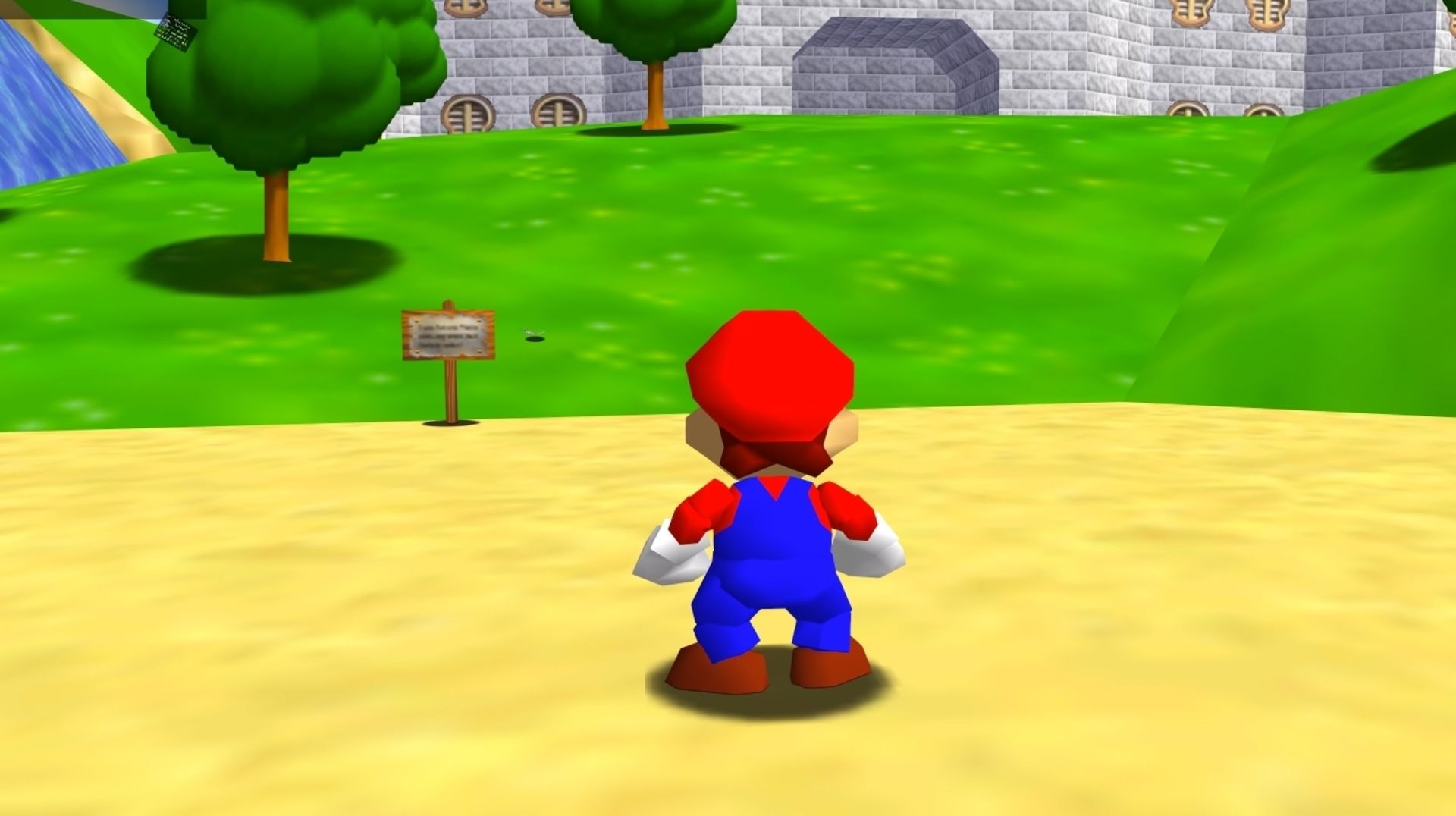
Before Super Mario 64, 3-D games frankly… stunk. No one had really figured out the proper way to control (in-game objects) in them, and much less the way that camera angles should be placed.
On top of that, before the Nintendo 64’s arrival the hardware available in both, PC and consoles (though developers would eventually manage to get around underpowered specs to craft decent 3-D experiences for the PS1 and the SAT) seemed underprepared for the task of rendering huge 3-D worlds.
All that changed when Nintendo unleashed its famous plumber onto the 3-D world back in 1996. Super Mario 64 was a Nintendo 64 system seller, and it was a revolutionary game that would change the way that 3-D games looked and played moving forwards. No other game in this list (with the possible exception of Ocarina of Time) was more revolutionary and more mind-blowing at the time of its release than Mario 64 was in 1996.
Super Mario 64 offered a true sand box experience with its gigantic self contained worlds. Formidable challenges awaited players on air, under vast bodies of water, on grassy fields, snowy slides, and even in scorching hot deserts. .
Miyatomo and Nintendo EAD explored every imaginable and unimaginable (at the time) facet of what it meant to play in three dimensions. Quite simply, Mario 64 is a stunning achievement in the digital arts, and as a first time experience it has yet to be surpassed and will likely remain unmatched until the gaming industry manages to get “Virtual Reality” right.
NER’s take on the game’s ranking: Personally, I feel that Super Mario 64 deserved a top 3 spot on the list. It is certainly more revolutionary than the other games in it, and I feel that it has aged better than the first person shooters ranked here.
Then again, the scoring and placement these games reflect what the critics thought of the game in their era (for the most part, as Gamerankings.com is no longer available).
4. The Legend of Zelda: Majora’s Mask (2000) – Metascore: 95
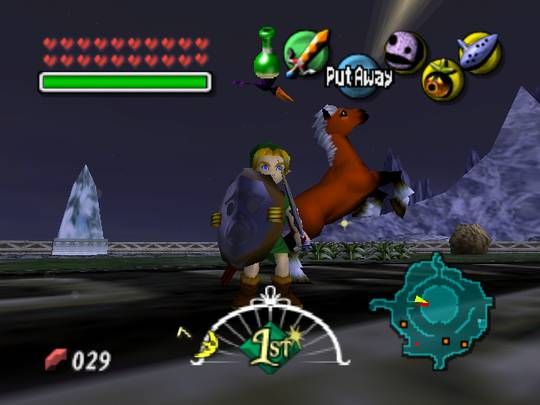
The Legend of Zelda: Majora’s Mask had the toughest act to follow in the history of the gaming industry as The Legend of Zelda: Ocarina of Time‘s direct sequel. After all, how does a game live up to perfection?
Developed in record time for a modern Zelda game (only two year turn-around from Ocarina), Majora’s Mask was expected to deliver a better looking, but equally epic experience as its predecessor Ocarina of Time the Nintendo 64’s rapidly aging hardware.
Thanks to the clever use of Nintendo’s 4MB Ram Pak (which upgraded the console’s RAM from 4MB to 8MB), The Legend of Zelda: Majora’s Mask did manage to look slightly better, and more colorful than Ocarina of Time, which was a stunning achievement for the hardware at the time.
Nintendo EAD once again delivered by providing a gigantic world that rivaled (and might have actually been larger than) Ocarina’s Hyrule. An impressive array of skills based on the masks used by Link would not only influenced his look, but also the brilliant design of puzzles in the game’s dungeons and in different over-world areas of the game.
Most unique of all, Majora’s Mask‘s doomsday storyline had our young elfin hero managing 3 (realtime) in game days before Termina’s (the new world) moon came crashing down on it causing an apocalyptic mass extinction event.
Thankfully, Link has his trusty Ocarina of Time, and he can relive all 3 days over and over again until he successfully defeats Majora’s Mask’s evil spirit. The 3-day cycle allowed Nintendo to script every NPC with different routines for the 3-Days, many who had scripts that changed at different times of each day giving them and the game world a “living breathing” touch way before the days of ‘smart’ A.I. systems in open world games.
It helped that literally almost every NPC had some quest, or item to hand down to Link if you took the time to do everything that the game had to offer. As far as early open world action-RPGs went, The Legend of Zelda: Majora’s Mask was one of the most impressive games on home consoles.
NER’s take on the game’s ranking: I am a little biased here, Ocarina of Time remains my favorite game of all time, and Majora’s Mask is more of the same greatness in a different (if bizarre) parallel world. Honestly, this is my 2nd favorite game on the N64, but I have no issues with its ranking here.
The game earned a global 95 rating, which is pretty good. Having recently played through the 3DS remake, I further appreciate the game’s brilliant 3-Day Cycle mechanic. The game’s unique take on the Zelda formula has made it age as well as fine wine.
3. Golden Eye 007 (1997) – Metascore: 96
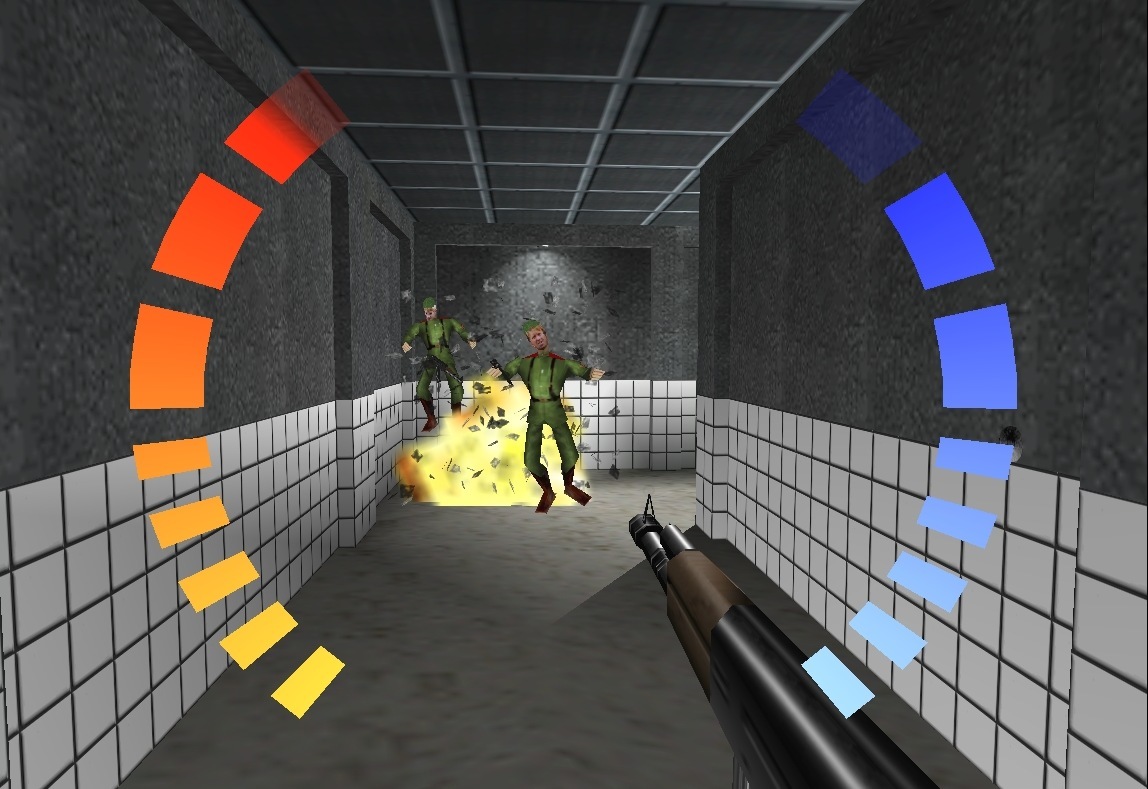
Golden Eye 007 was a seminal moment for the Nintendo 64, and the video gaming industry as a whole. First, it aided the anemic library of N64 games by adding another ‘system seller’ in mid 1997 ( and one that appealed to mature audiences). And secondly, it established the First Person Shooting genre as a commercially (and critically) viable genre on home consoles while establishing local split screen death match as nessesity if you wanted to succeed on the system as an FPS.
Golden Eye 007 in 1997 was the most realistic, and tightest playing FPS on consoles. It introduced objective based levels, and “smart A.I” for enemy combatants with enemies taking cover, and shooting out of cover in efficient ways (something recent games like Cyberpunk 2077 seem to have trouble with).
What gave the game longevity years beyond finishing its respectably sized campaign, was its four way split screen death match mode. This mode was revolutionary at the time and it made the N64 a favorite in dorm, and teenager rooms across America.
Golden Eye 007, as the 3rd best selling game on the system (8 million units), probably helped to move more N64 consoles out of store shelves than any other N64 game not named Super Mario 64.
NER’s take on the game’s ranking: Depending on your taste in gaming, Golden Eye 007 could easily rank as the greatest game on the Nintendo 64. I have many friends (and family members) that view Golden Eye 007 as the holy grail of the N64 because it was their first game on the system 24 years ago.
Personally, I do feel that the game merits a top 5 ranking based on its quality (at the time) and its impact on the industry. I wouldn’t rank it above Super Mario 64 though, but that’s just me.
2. Perfect Dark (2000) – Metascore: 97
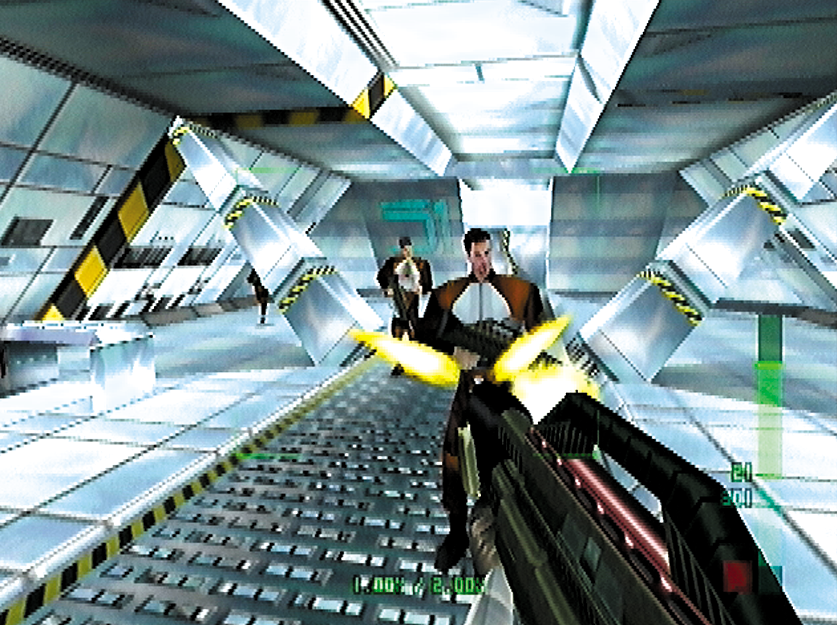
The Nintendo 64 era was Rareware’s golden age, and naturally the company had yet another entry in the N64’s top five (critically rated) games.
Perfect Dark was an interesting addition to the N64. Rare, was known for pushing Nintendo’s hardware to the absolute limits, and Perfect Dark certainly pushed the N64 beyond what many thought possible.
Rare improved engine and its graphics substantially from the days of Golden Eye. In fact, the game’s campaign required the 4MB Ram Pak in order to be played. Real time lighting, and more detailed textures were features of the game that made it a looker even when stacked against competing Sega Dreamcast titles.
Perfect Dark was an original IP conceived by Rare in the vein of James Bond (but set in the distant – now not so distant – future of 2023). A storyline featuring an interstellar war between alien species, and a greedy evil corporation’s hand on events transpiring on Earth made Perfect Dark a more interesting single player experience than Golden Eye 007.
Seriously, Perfect Dark’s universe is very interesting, which is a shame given how Perfect Dark Zero tarnished the series’ good name.
NER’s take on the game’s ranking:
The game plays a like a bigger, prettier and refined version of Golden Eye 007 in single player, and an infinitely more customizable experience in multiplayer. It is, in fact, a better game than Golden Eye 007 was when played today on Xbox One consoles.
On the N64, however, the game’s ambitious size and visual fidelity made it run poorly with frame rates often hitting the single digit numbers. I do feel that Perfect Dark is a better game than Golden Eye 007 even if its more of an evolution of the latter than a revolution.
In 1997 Golden Eye was more impressive than Perfect Dark was in 2000, at least in my view.
That said, I can’t dispute the game’s ranking being that in the year 2000 the Dreamcast was going strong with considerably much more powerful hardware (and double the amount of RAM) than the N64’s, and Perfect Dark still managed to look great, and impress on the aging hardware.
The game would not occupy my living room’s multiplayer sessions for long, as the PS2 would arrive later that year and it would eventually feature shooters with far better frame rates while playing in death match modes.
Then in 2001, Halo Combat Evolved arrived and rendered PD an obsolete dinosaur in terms of multiplayer fun. Therefore, my memories of Golden Eye 007 remain dearer to me as I played much more of it.
1. The Legend of Zelda: Ocarina of Time (1998) – Metascore: 99
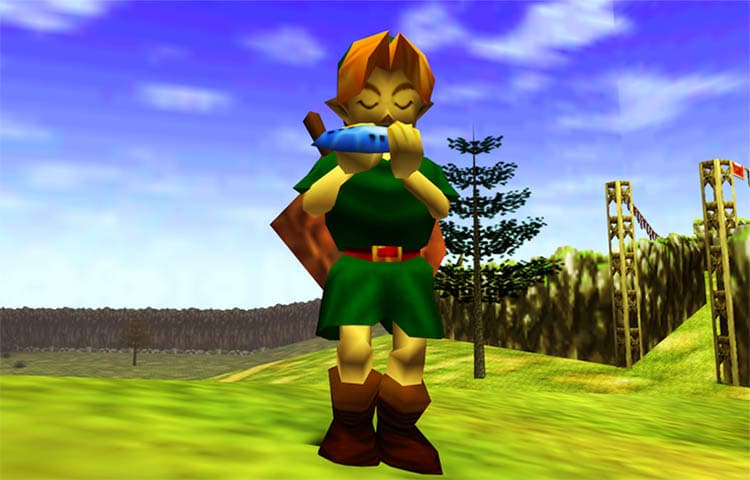
The Legend of Zelda: Ocarina of Time is legendary. Not only because it is the highest rated Nintendo 64 game ever, but largely because it remains, 23 years after its release, the highest rated video game ever.
The Legend of Zelda: Ocarina of Time immediately entered “Greatest of All Time” status the moment that critics received their review copies back in the late 90s. No game at the time came close.
The Legend of Zelda’s first foray into the 3rd dimension was as just as revolutionary and as spectacular as Super Mario 64 had been 2 years earlier. Visual, and gameplay features taken for granted today in open world games and RPGs were first pioneered by Ocarina of Time.
A cohesive gigantic 3-D world with different types of weather (sometimes changing in real time when using the Song of Storms), a Day & Night cycle, real time lighting, tons of side quest endeavors and even full blown mini games like the fishing game made Ocarina of Time a revolutionary experience back in 1998.
Whatever expectations gamers had set for the title after waiting 7 long years since A Link to the Past, Ocarina met and shattered. It was the first open world game that allowed players to traverse its terrain via horse back riding, and it was the first game to feature “Z targeting”. This method of targeting in-game foes would become a standard for 3rd person games (the ability to mark and target separate enemies in a field during combat) thereafter.
Link was able to interact with the Hyrule, and its 3-D environment in unprecedented ways. Horse ride your way into night fall, enter a dungeon and light a torch in order to light your way in the darkness, it was all possible in the game. Even shooting foes with the bow and arrow was handled with brilliant controls (both in 3rd person and first person mode).
The game was able to translate A Link’s to the Past brilliant dungeon design into the 3rd dimension, all while adding its own unique set of puzzles in each one.
Exploring vast underwater scenery was now possible, revealing secrets and hidden passages. In short, The Legend of Zelda: Ocarina of Time was the perfect action-RPG experience set in an open world (it was segmented from the hub field, but remember this was 1998).
Modern 3rd Person RPGs still play by the same rules that Ocarina of Time set more than two decades ago. Only Shigeru Minamoto and Nintendo EAD could have crafted a game so grand in scope, and revolutionary back in 1998.
NER’s take on the game’s ranking: The Legend of Zelda: Ocarina of Time is ranked by critics right where it belongs: At numero uno. While Ocarina of Time is my personal favorite game of all time, it is arguably and objectively the most impressive game ever at the time of release.
Because The Legend of Zelda: Ocarina of Time inspired every other open world game that came after it (RPG or Sandbox or both) it is hard to explain to younger audiences today what it felt to have played this masterpiece back in 1998’s holiday season. Audiences today take for granted much of what Ocarina of Time pioneered 23 years ago.
Quite frankly, it is nice that Metacritic still has a database that goes back that far, because reading old reviews is the only way to properly gauge The Legend of Zelda: Ocarina of Time within the context in which the game was released back in the early days of 3-D gaming.
Simply put: Ocarina of Time…much like Mario 64 before it, is the kind of game that you had to be right there (playing it) back in its release window (1998-1999) in order to fully grasp the magnitude, and downright near miraculous nature of its greatness.
The Elder Scrolls: Skyrim was very impressive back in 2011, but even in its greater moments it couldn’t match the jaw dropping experience that I lived when I first exited the Kokiri Woods and stepped into the vastness of Hyrule field.
As I walked northward in the grassy plains, day suddenly turned into dusk and then into night right before my teary eyes in full real time glory. No game has matched, and (likely) will ever match that same “Oh my God!” feeling that I experienced in that faithful moment nearly 23 years ago inside my old ‘Mitsubishi’ CRT screen.
For that alone, for the feeling that I was living in a real breathing world full of unlimited possibilities The Legend of Zelda: Ocarina of Time deserves its rating as Nintendo 64’s greatest game of all time.
Agree with the author? Couldn’t disagree more and are frothing at the mouth to tell him? Leave a comment here, on Facebook or send an email and make sure to follow Never Ending Realm on Facebook, Twitter, and YouTube!
